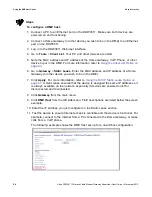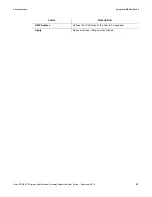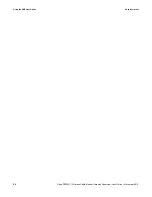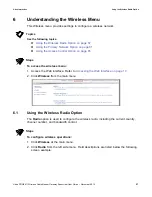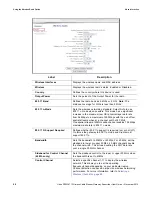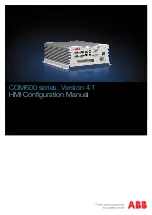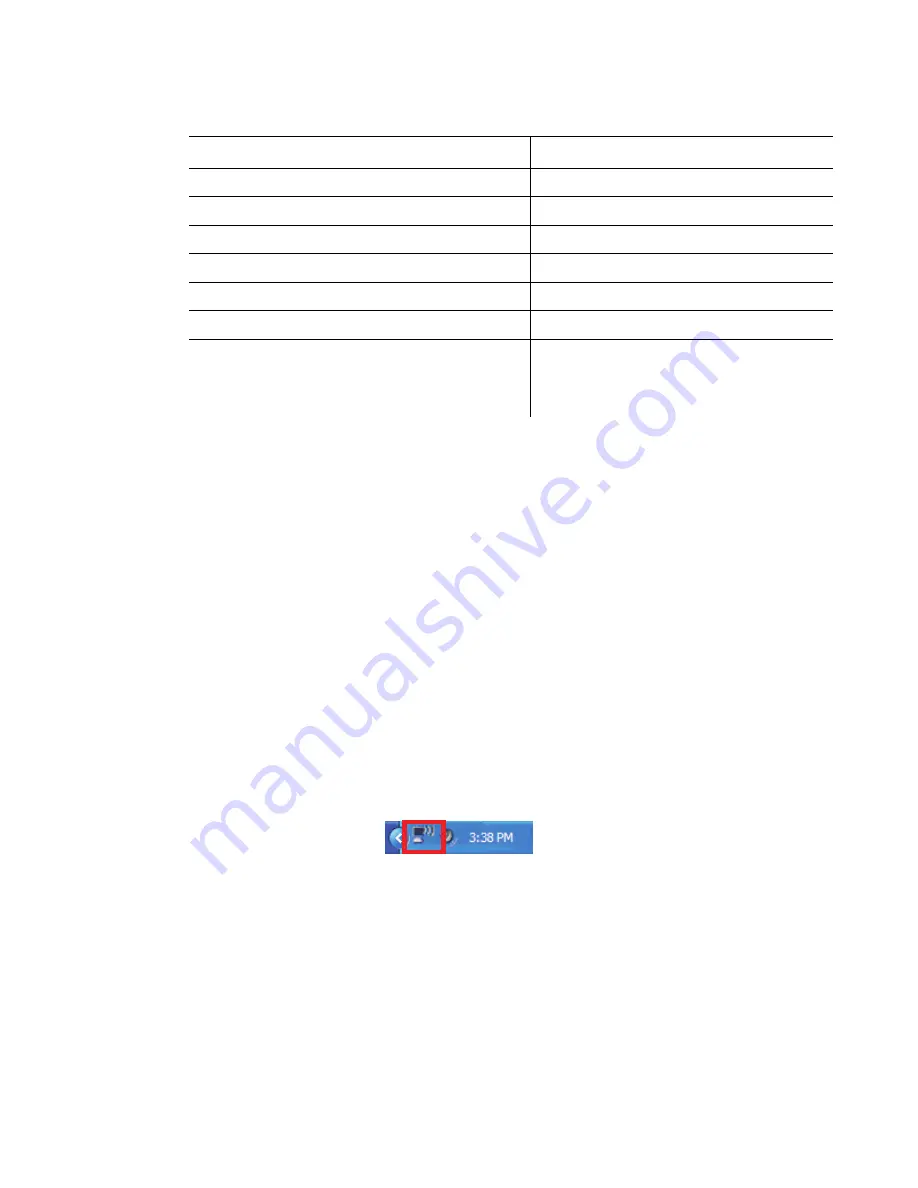
Deploying and Troubleshooting the Wireless Network
Ubee Interactive
68
Ubee DDW3611 Wireless Cable Modem Gateway Subscriber User Guide • November 2012
5. Use the attenuation value from the materials table above in the following formula:
Formula:
(Transmit Power,
use -30dBm
)
–
(Receiver Sensitivity,
use RSSI value
)
=
Allowable Free Space Loss
Allowable Free Space Loss
÷
Materials Attenuation Value
=
Optimal Distance in Feet Between the Cable Modem and a Wireless Client
Example:
(-30dBm)
-
(-67dBm)
=
37dBm (allowable free space loss for a 54Mbps connection)
37dBm
÷
.24db/foot (for open space)
=
154.16 feet
6. Once you know the optimal feet distance between individual wireless clients and the
wireless cable modem, you may resolve and prevent some performance issues.
7. To check the wireless signal strength and speed, use the following steps for a
Windows computer connected wirelessly to the wireless cable modem. If the wireless
computer is not connected, refer to
Connecting a Wireless Device on page 13
.
a. Double-click the Wireless networking icon in the system tray.
Glass Window (not tinted)
2dB to 3dB
Double Pane Coated Glass
13dB
Bullet Proof Glass
10dB
Steel / Fire Exit Door
13dB to 19dB
Human Body
3dB
Trees (Note 2)
.15dB / foot
Note 1
: Different types of concrete materials are
used in different parts of the world and the thickness
and coating differ depending on whether it is used in
floors, interior walls, or exterior walls.
Note 2
: The attenuation caused by trees
varies significantly depending upon the shape
and thickness of the foliage.
Attenuation Considerations at 2.4GHz
Material
Attenuation

